As gamekeepers, one of the first chores on your list for the spring and summer is to refresh your mineral sites. Overall use of minerals for antler growth usually tapers off when the acorns begin to fall and antlers harden, and it generally picks up again intensely when the turkeys start to gobble in the spring and antler genesis begins again. These times obviously coincide with antler genesis and when they harden during the late summer/early fall and then begin to grow again during the late winter.
Deer need both protein and minerals to grow their antlers. This is in contrast to animals with horns that are made of keratin (like fingernails), that do not shed, and need only protein to increase the growth their horns. Appreciate too, that whitetails must grow a new set of antlers every year, while animals that have horns only need to add gradually to their existing growth.

There have been countless studies conducted to determine whether mineral supplementation leads to any measurable increase in antler growth in whitetails – most of them come back showing little to no measurable difference or are inconclusive. The three foot “craters” in the ground created by whitetails lead most of us to believe there is more to a mineral site than just an attraction to the sodium generally found in most products, both natural and man-made. So do mineral supplements actually work?
According to the University of Missouri, the difference between 8 percent and 16 percent protein in a deer’s diet at 4 years of age can cause a 20-inch (or more) difference in antler size. Although the effects of mineral levels on antler size have not been scientifically documented, calcium and phosphorus levels are known to be important to antler development.
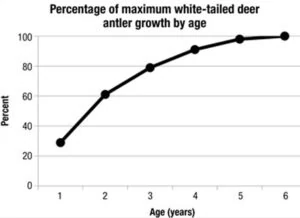 The exact amount of each nutrient can vary by region and by which study you happen to quote, but velvet antlers are made up roughly of 80% crude protein, 22% calcium, and 11% phosphorus. Hard antlers are closer to 40% crude protein, 25-35% calcium and about 18% phosphorus. There is no question that a good protein-rich food plot will do more for antler growth than a mineral site, but minerals do have an impact.
The exact amount of each nutrient can vary by region and by which study you happen to quote, but velvet antlers are made up roughly of 80% crude protein, 22% calcium, and 11% phosphorus. Hard antlers are closer to 40% crude protein, 25-35% calcium and about 18% phosphorus. There is no question that a good protein-rich food plot will do more for antler growth than a mineral site, but minerals do have an impact.
Mineral use by a whitetail’s body typically exceeds mineral intake during the antler growing cycle as well as when the does are carrying and nursing fawns. It only makes sense to provide them with a mineral supplement that contains all the essential nutrients and trace minerals they could need during these critical stages of growth and development.
As far as whether or not the mineral works, much depends upon the make-up of the specific mineral product and the science and technology behind it. Yes, mineral supplements work, but how well each performs varies product to product.
Quality mineral products like BioRock or Full Potential will also have nutrients and trace minerals other than sodium, calcium and phosphorus that aid in other whitetail bodily functions; like metabolizing fats and proteins. So even if a mineral supplement didn’t have anything to do with antler growth, these ingredients help your whitetails take the forage they’re consuming and turn it into antler, energy and protein rich milk for newborns.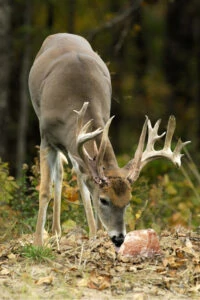
A buck in velvet is exceedingly protective of his antlers. Bucks will not spar when still in velvet, and if provoked they will rise to strike with their hooves instead, which are every bit as deadly. If you watch a buck in velvet slipping through the brush you will see him delicately twist and turn to avoid scraping his antlers.
The vast amount of new green forage that is available during spring green-up is a huge part of a deer’s diet. This new growth is very high in water and potassium content and causes deer to operate on a somewhat deficient level of sodium (salt). This constant flushing of a whitetail’s system from the increased intake of green forage causes them to seek out areas with high sodium content and makes a readily available mineral source that contains everything their bodies need all the more vital.
I think maybe the easiest way to explain the positive benefits of mineral supplementation for your deer herd is to look at it as if it might pertain to humans. It is well documented and proven in medical studies that a diet full of wholesome fruits, vegetables, lean proteins, and good fats leads to a more fit, immune, and overall healthier person. You can survive off of junk food…but you don’t thrive, there’s a big difference. Many times people that are on the best of diets still feel the need and see benefits from supplementing with a multi-vitamin to fill any gaps in their daily diet. If we are doing our job in the areas of maintaining a healthy deer density, providing high quality year-round food plots, and improving habitat for cover and safety, providing minerals is just another tool for you to utilize for an overall healthier herd.
When we developed Full Potential, we set out to create a mineral for whitetails that can address the specific mineral/vitamin needs of whitetails, mainly antler genesis and a doe’s need for nutrients when carrying and caring for fawns. Not only should the mineral be formulated for a whitetail’s foremost needs, but one that is quicker to be absorbed and utilized in the bloodstream.
During the velvet or growing stages, antlers are comprised of around 80% proteins and the remaining 20% mostly macro minerals, chiefly phosphorous and calcium.
It only makes sense that if we are going to plant food plots and improve native browse to increase the protein percentage in their diet, we should also provide our deer with a mineral supplement that mimics their antler make-up and skeletal needs. Chelated and organic minerals are more efficiently absorbed through the use of high quality yeast to improve rumen function. This yeast helps to maintain a healthy population of microbes in a whitetail’s rumen and aids in the digestion and utilization of the feeds they consume.
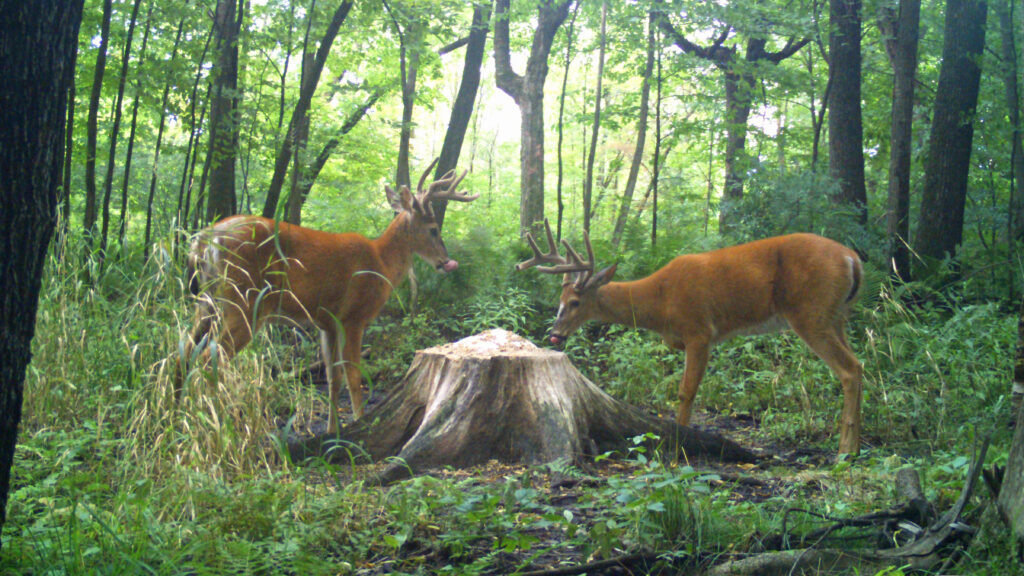
By improving digestibility and retention of protein and minerals, more key nutrients are available for antler growth and body health. More simply put, Full Potential was formulated to cover your herds mineral and vitamin needs and more efficiently use the nutrients in their everyday diet.
Directions for using Full Potential are pretty straight forward. Typically heavier soil is better than sand and a shaded area is better than full sun. Clear the ground of debris and dig a small trench 3-6 inches deep and around 2 feet in length, pour in Full Potential and blend with dirt that was removed.
These mineral sites should ideally be established during the late winter before spring green up, but can be applied anytime. Your deer will use it when they need it. A property should have one mineral site for every 60 to 80 acres depending upon your density, to ensure all deer have equal and easy access when needed. Use your judgment, if you believe the mineral is being devoured too quickly it’s probably telling you an additional site is in order.
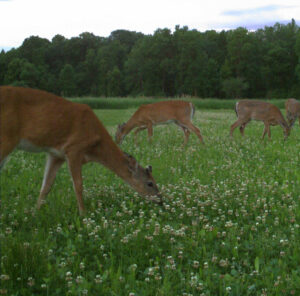 There are rare cases where a buck does not shed his antlers, and instead keeps a velvet covered rack that continually grows throughout the year. The condition is referred to as cryptorchidism. These “cactus bucks” are usually the result of an injury or castration of the testes which alters their testosterone levels. The age at which the injury occurs will determine the severity of antler deformation or interruption in the normal antler cycle. Fawns that are castrated will likely not develop a pedicel and therefore never grow any antlers. An older-aged buck that has a testes injury or castration while he is hard antler will likely shed his antlers early due to the sharp decrease in testosterone production. The following season the buck can grow a rack that is permanent and stays velvet-covered.
There are rare cases where a buck does not shed his antlers, and instead keeps a velvet covered rack that continually grows throughout the year. The condition is referred to as cryptorchidism. These “cactus bucks” are usually the result of an injury or castration of the testes which alters their testosterone levels. The age at which the injury occurs will determine the severity of antler deformation or interruption in the normal antler cycle. Fawns that are castrated will likely not develop a pedicel and therefore never grow any antlers. An older-aged buck that has a testes injury or castration while he is hard antler will likely shed his antlers early due to the sharp decrease in testosterone production. The following season the buck can grow a rack that is permanent and stays velvet-covered.
The antler growing process is very interesting and one of the most unique cycles in the animal kingdom. Whether it is a whitetail, mule deer or elk, antlers are a large part of our fascination with these big game animals. BioLogic’s Bio Rock and Full Potential mineral can be great ways to supplement your deer’s diet and get great up close pictures during the antler growing cycle.
Join our weekly newsletter or subscribe to GameKeepers Magazine.
Your source for information, equipment, know-how, deals and discounts to help you get the most from every hard-earned moment in the field.


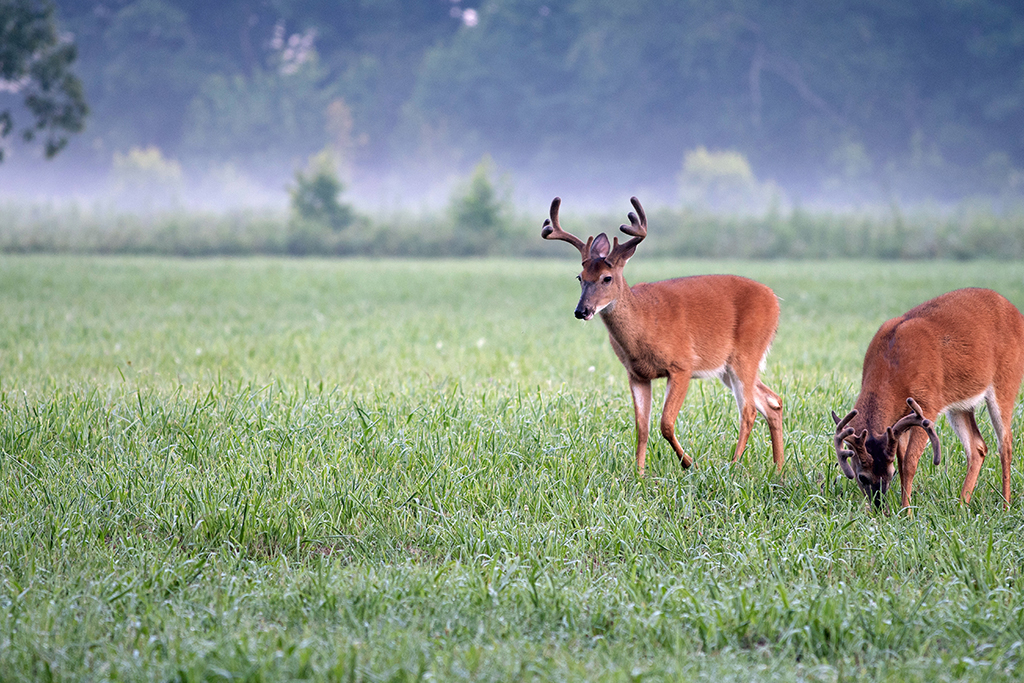


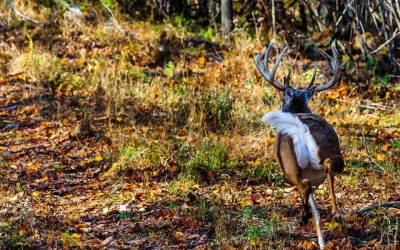
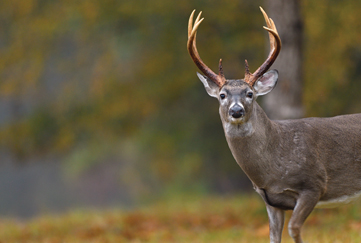
0 Comments